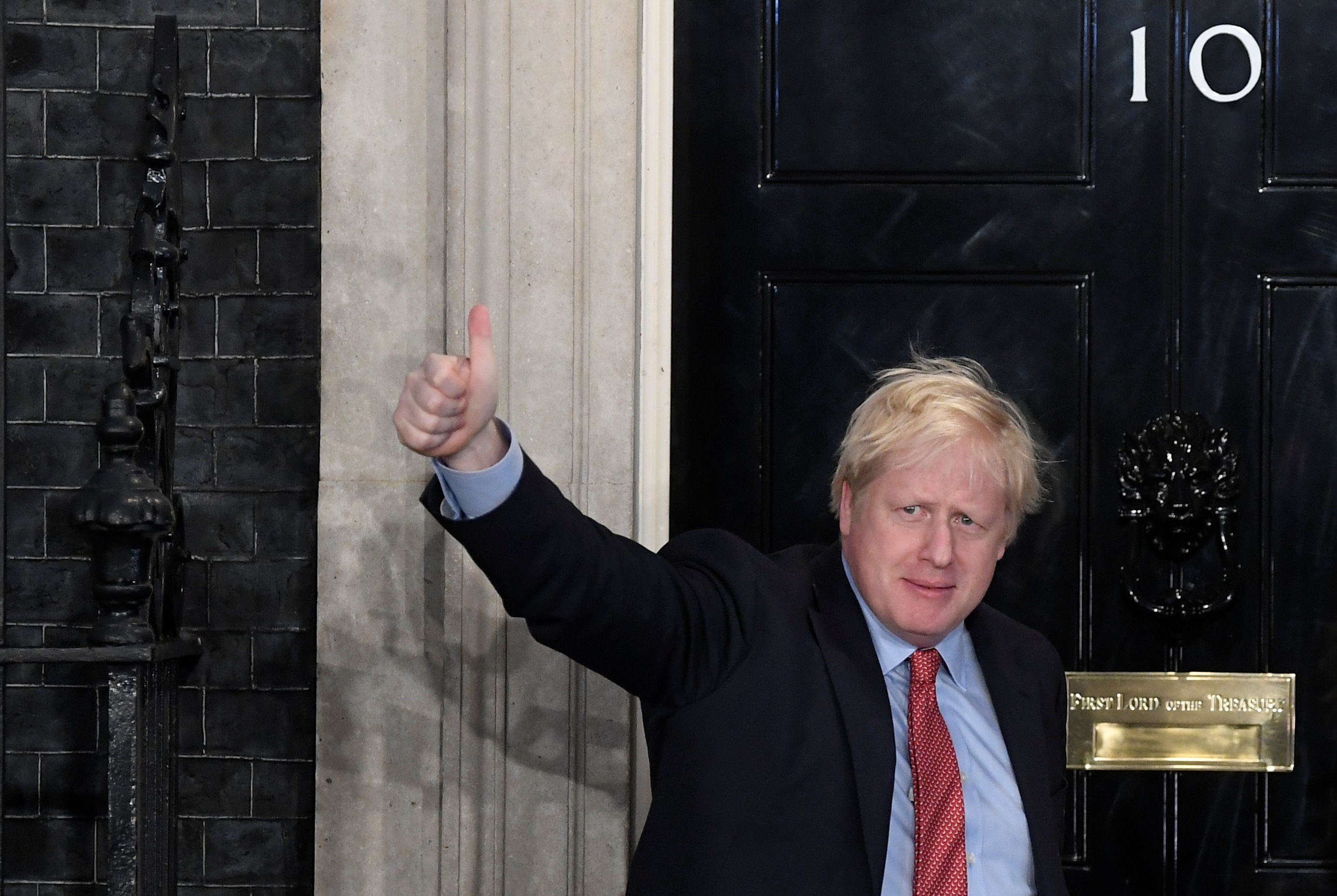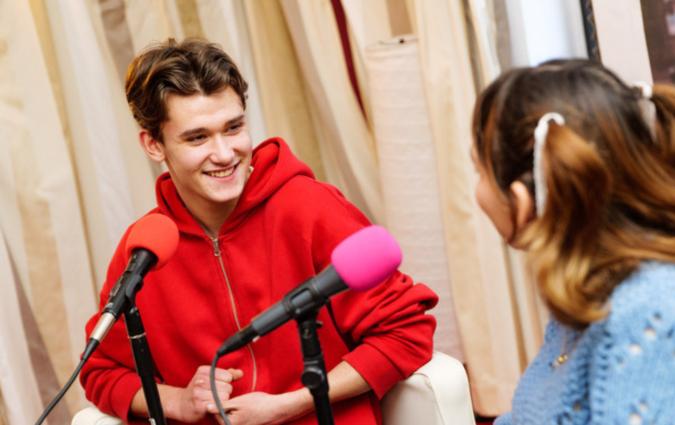People most likely to vote Conservative are the least likely to get news online

Britain's Prime Minister Boris Johnson gestures as he arrives at 10 Downing Street on the morning after the general election in London, Britain, December 13, 2019. REUTERS/Toby Melville
Different people see different election coverage. At the start of the campaign, we wrote that most people under 45 will primarily experience the 2019 UK General Election online through their smartphone and laptop screens—most of those 45 and over will access it through television.
Age matters for media habits—and in recent years it has also become a strong predictor of vote choice in the UK. Younger people are more likely to vote for Labour, and older people for the Conservatives. We don’t yet have the data to make precise links between media habits and vote choice in the 2019 election specifically, but we are able to use data from the 2019 Digital News Report to remind ourselves of differences in how those that self-identify with the political left and those that self-identify with the political right access news. Of course, left-right does not map exactly onto the two main UK parties—especially in an election where Brexit was a key issue—but it’s still a useful guide.
One of the clearest differences is that most of those on the left prefer to get news online, and most of those on the right prefer to get it offline. Just over half (51%) of those on the left say that their main source of news is online, compared to around one-third (34%) on the right. Those on the right have a stronger preference for print and television (58% if combined).
Even before polling day arrived some believed that the Conservatives had won the social media election. What actually counts as winning is not particularly clear, especially when we know that left-leaning people are roughly twice as likely to say that their main source of news is social media (a subset of the online category in Figure 1). Despite the recent growth of internet access among the older age groups, younger people are still more likely to use all of the most popular online social networks—and younger people tend to be left-leaning Labour voters. These differences ultimately filter down to how people interact with news on social media. Those on the left are more likely to share news and more likely to upload news related pictures or videos, for example.
The interplay between age, media habits and political attitudes results in a situation where those on the left are more likely to access news and information online, are more likely to use social media, and are more likely to interact with news online, than those on the right. This means that what journalists and commentators saw people say online and on social media in the run up to the election was probably not a particularly useful guide to the mood of the country as a whole.
It is clear now that the UK will have another Conservative government. There will undoubtedly be questions about the influence of online media on the election result in the coming weeks, and we should take these questions seriously. But to correctly understand the impact of online media on the election result, we must constantly remind ourselves that the people most likely to have voted Conservative in 2019 are the least likely to have accessed news about the election online.





